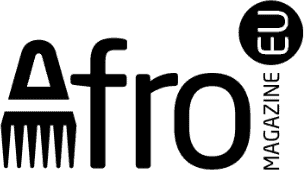Image

An old photo of Statians. collection Cuvalay sr.
Statia Alliance reveals names of Afrikan ancestors of Golden Rock plantation
ST. EUSTATIUS -- The St. Eustatius Afrikan Burial Ground Alliance reveals the names, ages, professions, and religious beliefs of 96 ancestors who were once connected to the Golden Rock plantation on St. Eustatius. This is part of the project "Remember Statia: Tracing Our Origins" that encourages the St. Eustatius community to make the Afrikan history of the island more visible and more personal.
The names are available in this online document: https://bit.ly/ancestors-goldenrock
Colonial archives: emancipation registers
The names in the document are taken from the emancipation registers of St. Eustatius. They provide the name, surname, age, gender, profession, and religion of the people of the Golden Rock plantation who were ‘freed’ in 1863. For St. Eustatius, it was a total of 1,075 people who became ‘free’. (It is important to note that these are not the names of the 69 ancestors whose remains were excavated in 2021)
Kenneth Cuvalay, project leader for St. Eustatius:
Getting the names of our ancestors from archival sources and making them known is important to change the narrative. Our ancestors were not just enslaved, they were people with a name, a face, a profession, a story. They came from different countries of the continent of Afrika, they had knowledge, values, and traditions. They survived the crimes and horrors of the Middle Passage; our ancestors virtually live in us."
Changing the narrative: researching and reinterpreting our marginalized history
“Black communities have long been marginalized and isolated with no means to adequately protect or commemorate our ancestors with the respect they deserve. It's time to change that. We need to tell their story; the past is never really past. Our ancestors were "emancipated" in 1863, but they were given no land to live on and were in no way compensated for hundreds of years of abuse, violence, and exploitation. That is important to realize to understand our current situation. In fact, St. Eustatius is still being colonized by the Netherlands and the African community is still being enslaved in other ways, such as socioeconomically and by the destruction of our historical cultural heritage,'' Cuvalay said. “Preservation is power and in St. Eustatius it is clear whose heritage is being preserved. It is not our heritage; it is that of the colonial powers.”
Participation is still possible
The goal of the project “Remember Statia: Tracing Our Origins.” is not only to support the community to explore its rich African-Caribbean cultural history, but also and especially to narrate the stories of the heroes and heroines, many of whom are buried on plantation The Golden Rock, from oblivion and give them a distinct place in today's St. Eustatius. It is still possible to participate in the project. If you have roots in St. Eustatius and interested to explore that further, then you are welcome to write a motivation or inspiration of up to 100 words and send it to the project team via website https://bit.ly/statia-ancestors All stories collected will be published (with permission).
About the St. Eustatius Afrikan Burial Ground Alliance (SE-ABG Alliance)
The SE-ABG Alliance came about as a result of the protests against the excavations on the 18th-century burial ground of enslaved Afrikans Golden Rock that were started by a team of international archaeologists in June 2021 in St. Eustatius (see https://www.change.org/LeaveOurAncestorsInPeace). The protests were initially led by the political party Ubuntu Connected Front Caribbean. Located in St. Eustatius and with allies around the world, the St. Eustatius Afrikan Burial Ground Alliance broadened the scope of the
struggle focusing on other Afrikan burial grounds in St. Eustatius such as the Afrikan Burial Ground Godet Plantation St. Eustatius (Godet/Fort Amsterdam).
One of the aims is to further broaden the scope of our struggle to the Pan-Afrikanist level, connecting with and working with Afrikan-centered organizations and movements that are also fighting for the preservation of our ancestors’ endangered Afrikan burial grounds around the world and taking control of our narrative that has been distorted. Among them are Annina van Neel, CEO of the Tiekie Box Project, and protagonist of the awarded documentary “A Story of Bones,” and Peggy King Jorde, consultant and defender of marginalized histories and Afrikan burial grounds.
About Bigi Bon Foundation
The projects of Bigi Bon foundation's focus on inclusion. Bigi Bon means Big Tree in the Sranan language, which refers to its philosophy that Big Trees provide much Shade; Big trees provide shelter, protection, housing, and nourishment to other beings in the forest, just as adults should provide protection to children.Our generation lives under the watchful eye of the previous and we are tasked with keeping a watchful eye on the next generations.
The foundation aims to improve the position of immigrant communities in general and especially the Afrikan diaspora communities, through knowledge generation through media related activities and providing learning support. Also: increasing the opportunities of people, especially young people from the aforementioned communities.
Project Memre: https://afromagazine.nl/nieuws/project-memre-met-afro-magazine-op-jacht-naar-verhalendie-de-geschiedenisles-negeerde
For the Alliance is Afrika spelled with a “k” instead of a “c” based on the following insights:
- It is a Pan-Afrikan spelling which relates both to the Afrikan continent and to the Diaspora;
- It reflects the spelling of “Afrika” in all Afrikan languages;
- It includes the concept of “ka,” the vital energy which both sustains and creates.
In response to the protests against the Golden Rock plantation, we published a scientific article in January 2022 “A Future That Does Not Forget: Collaborative Archeology in the Colonial Context of Sint Eustatius (Dutch Caribbean)”.by archaeologist marjolijn kok. We also published the “Manifesto: What the FARO Convention means for St. Eustatius”.

